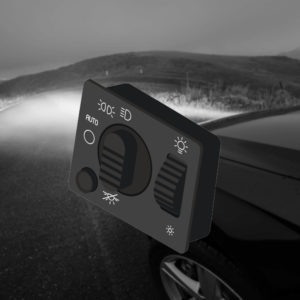No one wants to find their vehicle missing because a thief stole it while you’re away. Older models are at higher risk because they lack the antitheft devices we take for granted today. While most vehicles employ multiple security devices, it never hurts to add one or two of your own.
A kill switch can help protect your vehicle from car thieves. It prevents most thieves from driving off with your car. There are several types of kill switches available, so you can choose the one that fits your unique application.
What Does a Kill Switch Look Like?
A kill switch is a switch that stops the engine from starting. It prevents thieves from driving off with your vehicle if they manage to break into its interior. This security device is usually located somewhere it won’t stand out to hide it from unwanted attention.
You can usually combine different kill switch types for increased protection. Even if one of the kill switches gets identified and defeated, car thieves still have to deal with the other security measures.
Types of Kill Switches
Below are the types of kill switches that help prevent car thieves from getting away with your vehicle:
Fuel System Relay Kill Switch
The fuel system relay kill switch disables the engine’s fuel supply. They’re small, easily installed, and easy to hide and use.
Most fuel system relay kill switches are on/off toggles in the positive circuit of the fuel part. You can hide the switch in any location. However, you must connect the switch to the electrical wiring. Recommended locations include under one of the seats, inside the glovebox, beneath the dashboard, and in the trunk.
The engine burns gasoline or diesel to generate energy. If it doesn’t receive fuel, the vehicle won’t run, no matter how many times the ignition system fires up. The fuel system relay kill switch interrupts this fuel flow when you put it in the off position.
Some fuel kill switches disable the fuel pump that transports gasoline or diesel to the engine. Others turn off the fuel injection system that sprays the fuel in the cylinder. Their methods differ, but the result is the same.
Battery Disconnect Kill Switch
The battery disconnect kill switch cuts off electrical power from the car battery, de-energizing your vehicle. While more complex than its fuel system relay counterpart, this type also immobilizes your vehicle more thoroughly.
When set in the off position, the kill switch disconnects the car battery’s circuit. It de-energizes your vehicle, turning off electrical devices that run on battery power. One of the affected parts is the ignition system that starts the vehicle.
Unfortunately, the battery disconnect kill switch also resets electronics that draw power from the car battery when the engine isn’t running. Devices like the clock and radio might reset to factory baseline and clear their memory. You’ll have to reenter the correct settings.
You can install the battery disconnect kill switch on the positive battery cable. In many setups, the kill switch goes under the hood. Alternatively, extend the positive battery cable until it reaches the driver’s seat, where you can install the switch. If you extend the cable, use a 0-gauge cable and a heavy-duty rotary switch.
Ignition Wire Kill Switch
The ignition wire kill switch disables the ignition system. Putting the kill switch in the “off” position cuts the connection between the ignition switch and the starter motor that cranks the engine. It stops the activation signal from the ignition switch from reaching the starter, thus preventing cranking and starting.
Installing an ignition wire kill switch is a complex job. Your vehicle’s wiring diagram will come in handy here. Consult the diagram for the wire leading to the starter solenoid that controls the starter motor. You must put the kill switch on the electrical circuit as far from the ignition system as possible to ensure it stays hidden.
Fuse Box Kill Switch
Do you want the benefits of a kill switch without the time-intensive labor of installing new wiring and parts? The fuse box kill switch leverages the vehicle’s existing fuse box to prevent your car from starting without your permission.
Fuses protect the electrical system from overloading. If a current with excessively high voltage passes through a fuse, the device blows, cutting the connection.
The fuse box kill switch replicates the effect of a blown fuse by disabling or removing the fuse that protects the wiring from the battery or the wires leading to the fuel or ignition system. It hides in plain sight by pretending to be a part of the fuse box.
Remote Car Battery Kill Switch
The remote car battery kill switch lets you disable the vehicle’s battery power from a distance. It’s usually part of the key fob. With the press of a button, the remote car battery kill switch will wirelessly cut off power from the car battery.
Pull the Fuel Pump Relay
Instead of installing a kill switch, you can remove the fuel pump relay from the main fuse box. This relay is the electromagnetic switch that controls the current flow to the fuel pump. Removing it deprives the fuel pump of power.
Modern vehicles keep their fuel pump relay in a relay block. You can find the relay block in either the engine compartment or under the rear seat.
Installing a Kill Switch
Keep a complete wiring diagram of your vehicle at the ready before installing a kill switch. The diagram will help you locate and identify the wires you need to modify.
Any information provided on this Website is for informational purposes only and is not intended to replace consultation with a professional mechanic. The accuracy and timeliness of the information may change from the time of publication.


































